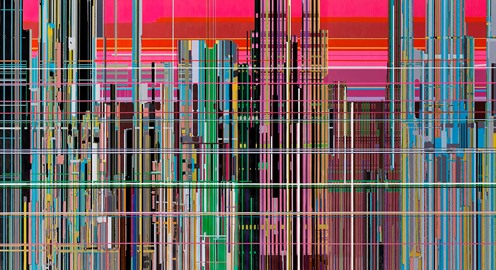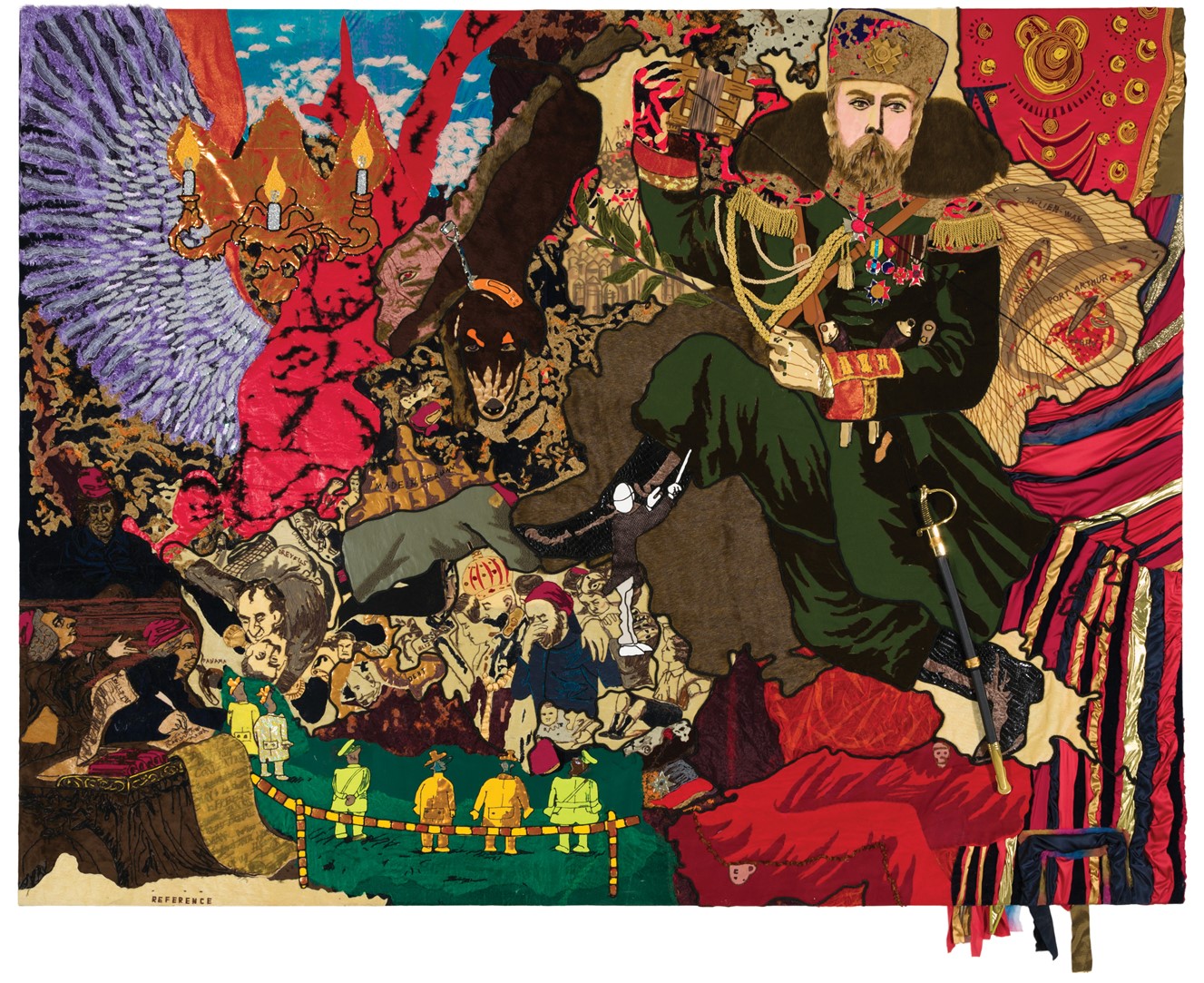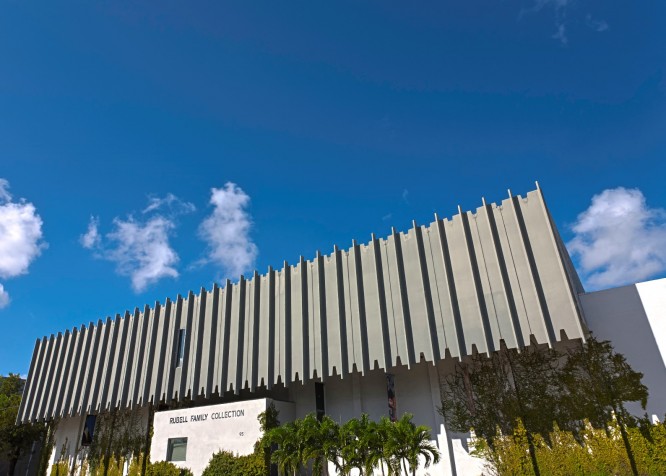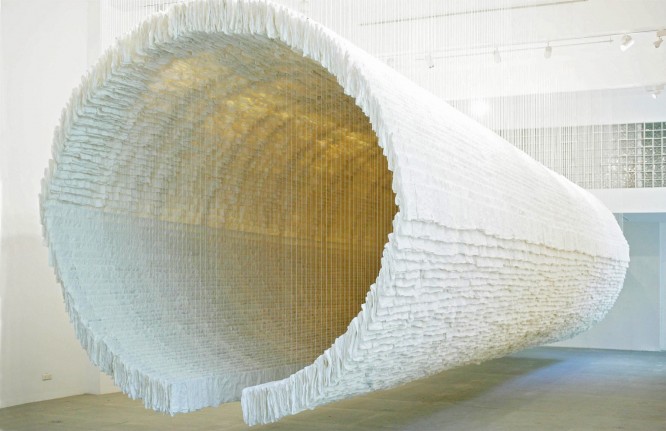Established by then-newlywed art enthusiasts Don and Mera Rubell in 1964, the Rubell Family Collection (RFC) is one of the world’s largest private art collections. The couple began collecting art in 1962 on a very low budget; upon inheriting the fortune of Studio 54 owner Steve Rubell in 1989, their capacity increased significantly. In 1993, the RFC moved from New York to Miami, Florida, where the Rubells were instrumental in initiating Art Basel Miami. In 1994, the Contemporary Arts Foundation (CAF) was created to extend the RFC’s mission. A 4,180 sqm repurposed Drug Enforcement Agency facility in what is now Miami’s design district is a museum open to the public, with a regular programme of catalogued exhibitions drawn from their expanding collection. “28 Chinese Artists” will be the next show, bringing together art works acquired on five separate visits to China since 2001.
Iona Whittaker: You have been collecting for a long time, and internationally. What initially provoked your interest in Chinese artists, and what was the catalyst for your first trip there in 2001?
Mera Rubell: The catalyst was Zhang Huan. We met him in New York at a PS1 exhibition he was participating in. We became friendly with him and his wife. About two years into the relationship, they decided to make a trip back to China, and we joined them. It was in 2001, and we were there for a month or so.
Don Rubell: We met a lot of performance artists and a lot of intellectuals—there were a number of group activities, but not as many individual artists. Most of the people we met were professors or young philosophers who were thinking about art but not really producing it. We didn’t meet many artists until they became known in the West—for example, the ones who appeared in the 2007 Venice Biennale. And to be quite honest, before that Chinese art was not of particular interest to us, so we didn’t go out of our way to follow it. We did encounter Ai Weiwei in Beijing, and collected his work at that time, and of course Zhan Wang’s work. I can’t say that we connected with a lot of the art that came about subsequent to that. So, time passed. We went back to China six years ago, then a few more times after that—we thought it would be interesting to see what was happening there.
MR: We just didn’t connect. It’s not as if we liked or didn’t like it. It was strange, a foreign culture—we didn’t really understand it.
DR: I would have to say the earlier work we saw was more directed towards communicating with the West. This art is very much concerned with Chinese culture, and you just don’t get the feeling that it’s accessible to a broader audience.
IW: Your impressions obviously changed. Could you talk a little more about that?
MR: Well, let’s talk about the artists we ended up connecting with. There’s a lot of conceptual work here (in the exhibition, “28 Chinese Artists”); it’s hard to make generalizations yet, but after ten years of seeing this work, this is really the first time that it has all been shown together. It’s about engaging with the artists on an individual basis, rather than experiencing the works together as a whole.
IW: So perhaps this show is more like a beginning.
MR: This is not a curatorial exercise—we didn’t come up with an agenda, as you can see from the title. I think it’s really about presenting artists that we’re really intrigued by and the works we fell in love with. Interestingly enough, now that we’re installing the show, there is a language emerging amongst these artists that is intriguing.
DR: It’s when we find a group of artists that are interesting that we’ll show the work.
MR: We visited approximately one hundred studios in China, and we ended up collecting twenty-eight artists’ work. It comes out of an understanding, an attraction and availability. The other artists weren’t of as much interest, for various reasons.
IW: Your approach is to collect a number of works by an artist and then to look in a broader way at their practice—have you done this with the Chinese artists also?
MR: Absolutely.
DR: We visited studios three or four times and obtained examples of their work from different periods.
MR: We really say, “This is we work that we are going to insert into a broader collection.”

Liu Wei, “Liberation No.1”, 2013, oil on canvas, 300 x 540 cm, acquired in 2013
刘韡, 《解放 1》, 2013, 布面油画, 300 x 540 厘米, 收藏于 2013
IW: In terms of the catalog, are you including essays in it, or is it simply a list of works with images etc.?
MR: Normally, we do engage with writers and scholarship; but there are so many young artists here. Our Director really pushed us to see if the artists themselves would contribute about their work. At first I said “This is never going to happen—no way,” but then all twenty-eight did. This catalog is designed to personalize the work—by which I mean putting the faces to the art. At first, there was some objection because it felt like a magazine—we have a full-page picture of every artist and a statement. For us, it was a way to get past the confusion of names in a different language. We wanted the work to connect with the face of the person we met and spent time in the studio with. The catalog really became something other than a kind of academic document. We aren’t that interested in theory right now, but in asking the artists to communicate. Anything they wanted to say we would put in the catalog.
IW: There is still a dearth of materials about contemporary Chinese art. What do you use for reference and to keep abreast of developments in the scene when you are not in China?
DR: We have all the magazines. We communicate with curators and with gallerists obsessively. Although we visited 100 studios, we probably saw or spoke to people about the work of five hundred artists. But of course, we can only visit China a limited number of times. We use the internet and talk to other people to get an idea about the work. Quite honestly, the art scene in China is very polarized between people who support this or that group of artists to the exclusion of the others, so we felt we had to get a broad understanding before we went. We cannot rely on one person to direct what to we see.
MR: We came with a plan, and it was to hear opinions from many different corners.
DR: We visited nearly every serious gallery in China — all over the country — trying to map as much information as possible. The studios were the end point for us.
MR: Every time we met someone we asked them for a list of ten artists and said “Let’s talk about these artists—what is their history, their connection and so forth?” Between 2001 and when we really started going again, there were three artists we ended up with—Ai Weiwei, Huang Yongping and Li Songsong. When we went back six years ago, we visited Qiu Zhijie’s studio, but he wasn’t there. Seeing the work without sitting down and getting to the heart of something just doesn’t work for us, so it was the second time that we went to see him that we said, “Oh my god, this is very serious and amazing practice.” We ended up acquiring several works, one of which is called “Darkness Illuminates Me” (created when Qiu spent a year in Nanjing, where there is a bridge people commit suicide from). It’s not a political work—it’s a work about humanity. It made us feel that there is something tremendously profound going on in China. You realize that this is not an artist who makes objects; he is committed to an activity that deals with making a human difference in the world through art. It’s very meaningful, and that language is universal.
IW: What would you say are the major developments that you feel you’ve witnessed whilst observing the art scene and talking to the artists over the last few years?
MR: Well, I think the freedom and the possibilities for the actual making of art have changed. Video art, for example—that’s a big deal because somebody can have no space and be anywhere and still be able to produce very strong work. The videos we are presenting are so compelling. Technology has become so accessible. It’s now conceivable for an artist to create what would have previously been impossible. The computer has opened the door for all this, and interestingly enough there are certain artists who are using machines to paint, with works that are directed by the computer. We are thinking of Xie Molin.
DR: Two major events have occurred. One is the development of galleries in China, and the other is the emergence of Chinese collectors. Artists no longer make art that’s just going to be appreciated in the West; Chinese—or Asian—collectors are supporting the work they are producing now. I think this gives them a degree of freedom, not unlike in the Middle Ages when you went from having guilds to artists being valued as individuals. I think an artist can now support himself doing whatever he wants because of a different market. We’re seeing a greater internationalization of the artists, in that they are in dialogue much more with Western art, and that’s to do with the zeitgeist.
IW: It might seem an odd question, but do you ever feel aware of taking these works to America?
MR: This is an interesting question because really, these are all young artists who continue to work, and they want an audience. I think there is something to be said about leaving home and coming back; for these artists, it’s a tremendous resource to have admiring collectors and audiences in other parts of the world. For me art is an object, but it’s also an idea, and these works circulate in the world to grow and develop themselves. These are young artists extending their reach; it’s a give and a take. At a certain point, art is public.
DR: There would otherwise be no improvement in art because it would be about very tight local concerns with no contrasts. This international condition spurs it because the work is valued where it goes.
IW: Many people are unfamiliar with Chinese art or have preconceptions about the country. How do you assess the tastes and expectations of your local audience in this regard?
DR: We just show people things we like—we have no agenda.
MR: We’re really not coming back with any specific message. It would be so pretentious for us to pretend to know China. All we can say—and this is why we struggled with the title so much—is that it’s a vast country and an ancient culture. We only speak about what we experienced, what we saw and what we’re committed to. This is simply our taste and our commitment to these 28 Chinese artists. There is a language and a humanity that humans share—art, like music, has a way of speaking beyond languages.
MR: Right now we have a group of students here assembling a piece called “Boat” (by Zhu Jinshi), which is composed of 8,000 or 9,000 pieces of paper. In a way, I wish the audience could see the process. It’s hard for me to explain, but it has something to do with culture in China—the devotion, patience and Zen that goes into a group of people making this piece happen. It’s unbelievable. All this year we’ve been contemplating it. I think this is one piece that people might think could have been made by a European—I don’t know. I can’t imagine an American artist making this piece.
IW: The works you acquire are always chosen based on debate and a final consensus amongst your family members. What sorts of points arose in your discussions about which Chinese works to buy?
DR: It’s a conversation that is not unique to the Chinese works—it’s about the quality of the work, the perception of the work and the potential of the artist.
IW: But are there any particular moments or stories you recall from your visits?
MR: I think that at first, especially regarding the studio (Xie Molin’s) where you have the artist-made machine, we are inclined to love the artist’s hand. We had to turn ourselves around to understand that sometimes the mind is more powerful than the hand or that the mind creates the hand, which is also acceptable. As we said before, there is this zeitgeist happening. We were in Wade Guyton’s studio five years ago, and were introduced to his method of copying with a Xerox machine. We said, “Oh my god, this is unacceptable, it’s ridiculous—how can you expect us to take this seriously?”
DR: The randomness of the machine….
MR: But we ended up buying the work, even though initially we’d found it ridiculous and terrible! What we’re witnessing is the mind being as powerful as the manual gesture.
DR: I have a statement I like which is “We’re not the artists”; the truth is that we have to go where the interesting work is, even if it’s work that we would not normally pursue—for example geometric abstraction. There is something very interesting happening in that realm in China today.
MR: I think that probably is the model for our collection. The truth of the matter is, most people collect the art of their generation. If you want to keep going—and we’ve been doing this for a long time—it’s really about going where you don’t even know, and you have to be open to what you feel. That’s why having the younger generation with us means that we are constantly being banged over the head and asked, “Are you looking at what you already know or are you exploring what you don’t know?” The unknown is there to be experienced.
[Correction: an earlier version mistakenly referred to Zhan Wang; the correct name is Zhang Huan]






